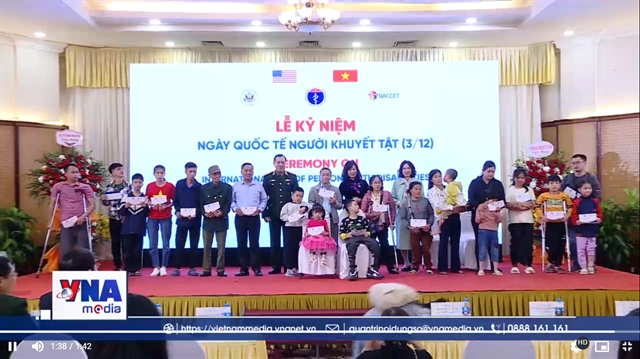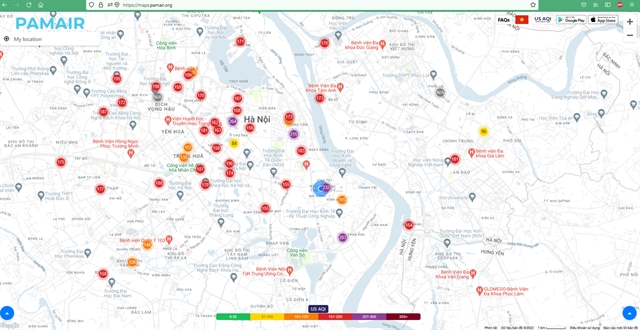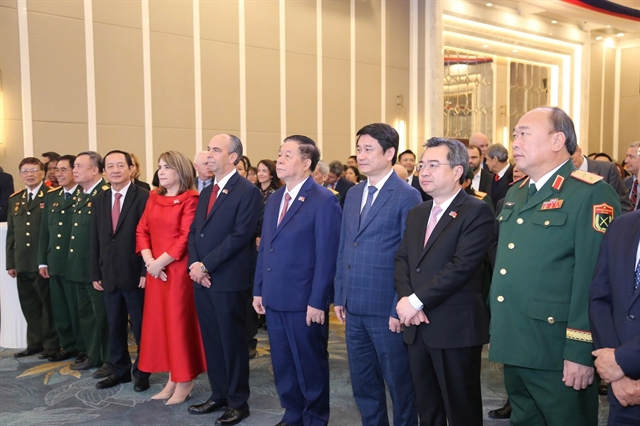 Society
Society

 |
| Air pollution has covered Hà Nội in a thick layer of smog.—VNA/VNA Photo Tuấn Đức |
HÀ NỘI — Severe air pollution in the capital city is forecast to linger until at least this weekend, leaving much of the city clouded in smog.
By 6am Monday, PAM Air monitoring stations in Hà Nội reported the Air Quality Index (AQI) as red (AQI 151-200, 'Unhealthy'), with some areas reaching purple (AQI 201-300, 'Very Unhealthy').
By noon, the air quality had improved slightly. However, much of the city remained in the red and orange levels (AQI 101-150, 'Unhealthy for Sensitive Groups').
Hà Thanh Hương, Project Manager of PAM Air, told Tiền Phong (Vanguard) online newspaper that the air quality in Hà Nội is deteriorating.
She said the air is often polluted late at night, which lasts until morning or even noon the next day.
"The recent wave of air pollution started on November 3 and is predicted to last until the end of this week," she said.
Hương said air quality usually drops between October and March for between two and 14 days at a time.
"Therefore, during this time, people should monitor air quality regularly and actively protect their health by wearing fine particulate matter (PM2.5) dust masks, as well as limiting outdoor activities in the early morning and late at night," she said.
Causes
According to environmental experts, air pollution in Hà Nội is related to meteorology. In the past few days, Hà Nội's weather has experienced a temperature inversion, causing pollutants from traffic, construction, industrial production, craft villages, and daily life activities to be deposited in the air near the ground, leading to air pollution.
The Ministry of Natural Resources and Environment's National Environmental Report for 2016-2020 also pointed out that air pollution in Việt Nam is significantly affected by climate factors.
Dust concentrations in the air also change according to the rules of the day, especially in the areas near traffic axes. For example, the dust concentration increases during peak traffic hours and drops to the lowest between noon and night, the report said.
Under the report, air pollution in Việt Nam mainly occurs in big cities, urban areas and industrial parks.
Between 2016-2020, dust pollution was most common in big cities, urban areas and areas with a lot of industrial activities, especially PM10 and PM2.5 dust pollution in Hà Nội and HCM City.
The report said that Hà Nội's days with poor air quality accounted for 30.5 per cent of the total number of observed days in 2019.
 |
| A PAM Air map shows the quality of air in Hà Nội on Monday morning. — Photo: maps.pamair.org |
Recommendations
The Ministry of Health has advised people to monitor air quality regularly and limit opening windows and doors while the air is polluted. In addition, people should regularly clean up rooms and houses and plant trees around the house to help in preventing dust and clean the air.
People should clean their noses, gargle physiological saline in the morning and evening, especially after going out, and wash their eyes with physiological saline at night before bed.
The World Health Organisation said PM2.5 dust could penetrate the lungs and enter the body through the bloodstream, affecting all major organs.
Exposure to PM2.5 can cause both cardiovascular and respiratory diseases such as strokes, lung cancer and chronic obstructive pulmonary disease (COPD).
A nNew research has also shown an association between prenatal exposure to high levels of air pollution and developmental delay in infants, as well as psychological and behavioural problems later on, including attention deficit hyperactivity disorder (ADHD), anxiety and depression. — VNS


.jpg)

